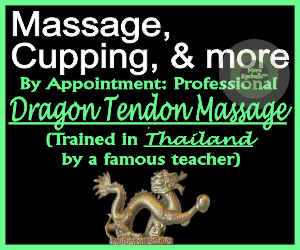M
MassageNews
Guest
As parents prepare for cold and flu season tearing through schools, many are looking for alternatives to chemical-laden products, as well as hoping to avoid the overuse of antibiotics. For some, that means turning to natural options such as essential oils. They are rubbing eucalyptus on chests and feet, using peppermint to fight nausea and diffusing blends into the air to boost immune systems and try to ward off the germs in the first place.
Which oil for which ailment?
Essential oil blends for wellness, as recommended by Kristina Gagliardi-Wilson, founder and CEO of Poofy Organics:
To boost immune system: The "Thieves" blend is a combination of lemon or orange, cinnamon, clove, eucalyptus and rosemary. If uncomfortable using eucalyptus because the child is younger than 6, substitute fir. Can be diffused or diluted and applied to the bottom of a child's feet.
For stress and anxiety: The Poofy "Peace Muse" blends oils of ylang ylang, patchouli, orange, roman chamomile, lavender, marjoram, neroli and bergamot. Don't have all of those oils on hand, just pick a few. Diffuse or use the blend to spread lightly on children's pillows before bed.
For stomach distress: Basil, fennel, marjoram, thyme, chamomile, peppermint and ginger ease intestinal bloating and invigorate sluggish digestion. They should be properly diluted and rubbed on the stomach in a clockwise direction or diffused. Remove fennel, marjoram and peppermint if child is 5 or younger.
For congestion or allergies: If the child is older than 5, use fir, chamomile, eucalyptus and peppermint. For those 5 or younger, use orange, cypress, fir and cinnamon. Diffused or diluted in a carrier oil such as coconut oil and rubbed on the chest or feet.
To wake up or focus: A citrus/mint combo such as peppermint, spearmint and orange can be diffused in the morning, or send them to school with a roll-on bottle and so they can roll it on their wrists. For children under 5, fir can be used instead of peppermint.
Oradell's Whole Child Center nurse Karen Overgaard's favorite single oils and their uses:
Lavender: For stress, anxiety and sleeplessness: Diffused into the air, diluted and sprayed onto a pillow or diluted in carrier oil and massaged into the bottom of the feet.
Lemon oil: Relieves anxiety, is an air disinfectant when diffused and is a natural insect repellent by diluting with water and applying directly to skin.
Peppermint: For nausea, can be diffused or diluted in carrier oil and dabbed under the nostrils. Also a fever reducer — get a basin with room-temperature water, put in a few drops of peppermint (or lavender), then put cloths in the water and put compresses on the hands and feet.
Eucalyptus: For aches associated with a cold, flu or minor muscle injuries; also for congestion. When diffused, it is thought to stimulate the senses, in addition to clearing the nasal passages. Used much like Vick's VapoRub. Take a few drops and mix with a teaspoon of a carrier oil, then rub it on your hands, then rub it on the child's back, chest and feet bottoms.

Chris pedota/staff photographer
Kristina Gagliardi-Wilson, founder of Poofy Organics in Rutherford, mixing a batch of organics.
As with any complementary health treatments, though, there are proponents, opponents and some in between. Without the oversight and regulation of the Food and Drug Administration (FDA) and with conflicting information — even from supposed experts in the field — the decision for parents to try aromatherapy — the use of essential oils from plants for healing — can be difficult and confusing. Asking pediatricians can bring a variety of answers.

Essential oil concentrates from Poofy Organics.
"When families come in and ask about 'non-evidence-based treatments' I look at what is best for the child," Dr. Omar Baker, of Bergen County's Riverside Pediatrics, wrote in an email. "Every child is different, and each situation is different."
One thing not in doubt is that alternative medicine is big business in the U.S. at the moment. Essential oils manufacturing brought in $1.2 billion last year and grew 3.5 percent in the last five years, and is expected to grow even more in the next five, according to a market analysis from IBISWorld Industry research reports.
Safety concerns
When Grace Coppola-Busuttil of Wayne sent her twins to preschool last September, they became sick almost immediately. A mom who "always tries to make the environment safe and green," she called herself a casual user of essential oils prior to last fall. Then a neighbor helped her incorporate aromatherapy into their lives to help boost their immune systems and ward off illness, as well as help relieve the symptoms when sickness struck.
"We have found it extremely safe and effective," said Coppola-Busuttil.
Parents who decide to go this route must be cognizant of safety concerns, however.
"It doesn't matter how natural or organic a product is, somebody will get a reaction to it," said Kristina Gagliardi-Wilson, founder and CEO of Poofy Organics, a Rutherford company that makes health and wellness products using organic ingredients, including essential oils. "Just because something is generally regarded as safe, that doesn't mean there isn't the other side where you have to be careful. …
"When they say people are going to have a reaction to it that means most people can use it safely, but here's the concern – some children can have respiratory issues with these essential oils. We make a vapo-rub for children. Instead of eucalyptus we use fir, and it smells almost exactly the same, most people cannot tell the difference, and it has the same effect in opening up the respiratory channels, but it can be used for younger children."
Coppola-Busuttil's children are patients at the Whole Child Center in Oradell, a pediatric practice that promotes holistic and complementary medicines. The center's nurse and clinical coordinator, Karen Overgaard, counsels parents on the use of these oils.
"I never give that as the only option," Overgaard said. "People will say, 'What should I do for a fever?' I say, 'You can do the usual Tylenol or Motrin, or you could …' then I go down my list. It's complementary. It's just always nice to have a more natural option."
Peppermint is something Overgaard often recommends for nausea and to help break a fever. Baker said there is some evidence to back up that practice. While the American Academy of Pediatrics (AAP) does not have an official policy on essential oils, according to a spokesman, Pediatrics in Review, the official journal of the AAP, did post an article in 2006 on peppermint oil, saying evidence suggested it does help with gastrointestinal issues and can act as an antibacterial agent.
While the Whole Child Center does not have age restrictions on using any of the essential oils, Gagliardi-Wilson was taught there are some kids who are too young for certain oils. Peppermint is one of them, as are eucalyptus and rosemary. There are different kinds of peppermint and eucalyptus, she said, and some are more apt to cause a reaction than others, particularly in children younger than 6 years old.
Neither Overgaard nor Gagliardi-Wilson recommends ever ingesting the oils, and they stress the importance of proper dilution.
"Generally, essential oils are highly concentrated and potent, and they should be kept out of the reach of kids," said Erin Ihde, research and project manager of the Dierdre Imus Environmental Health Center at HackensackUMC.
Baker, whose practice has several Bergen County locations, does recommend some natural options like probiotics for diarrhea or colic and honey for nighttime coughs. Those are more widely accepted treatment methods. While some are skeptical of essential oils, many in the traditional medical community back up at least some of the reported effectiveness of the oils.
Antibacterial effects
According to the National Cancer Institute website, "Many studies of essential oils have found that they have antibacterial effects when applied to the skin" and have shown antiviral and antifungal activity in certain infections. "In addition, studies in rats have shown that different essential oils can be calming or energizing. When rats were exposed to certain fragrances under stressful conditions, their behavior and immune responses were improved.
"One study showed that after essential oils were inhaled, markers of the fragrance compounds were found in the bloodstream, suggesting that aromatherapy affects the body directly like a drug, in addition to indirectly through the central nervous system."
Companies that sell essential oils and products using them must be careful with how they phrase their usefulness because of FDA restrictions on marketing unregulated products for medical treatment.
"You can say that they're antiviral, antibacterial because there are so many studies that prove that they are, but you can't say they cure or relieve anything," said Gagliardi-Wilson, who has aromatherapy certification. "So it's really difficult because when you talk about essential oils — and they have been around for thousands of years and people have been using them therapeutically — it's hard to say, well, they don't do something that we know that they do."
For those who don't have the time, desire or education to create their own, companies such as Poofy Organics, Young Living, doTerra, AromaMD and others produce blends and products using the essential oils.
While some pediatricians, like Rosen, fully integrate complementary treatments like essential oils and aromatherapy, some dismiss them completely, and others take a case-by-case approach like Baker.
"Treatment is based on the best interest of the patient," Baker wrote. "Generally speaking a tincture of time is often the best medicine."
Email: yoriok@northjersey.com

Which oil for which ailment?
Essential oil blends for wellness, as recommended by Kristina Gagliardi-Wilson, founder and CEO of Poofy Organics:
To boost immune system: The "Thieves" blend is a combination of lemon or orange, cinnamon, clove, eucalyptus and rosemary. If uncomfortable using eucalyptus because the child is younger than 6, substitute fir. Can be diffused or diluted and applied to the bottom of a child's feet.
For stress and anxiety: The Poofy "Peace Muse" blends oils of ylang ylang, patchouli, orange, roman chamomile, lavender, marjoram, neroli and bergamot. Don't have all of those oils on hand, just pick a few. Diffuse or use the blend to spread lightly on children's pillows before bed.
For stomach distress: Basil, fennel, marjoram, thyme, chamomile, peppermint and ginger ease intestinal bloating and invigorate sluggish digestion. They should be properly diluted and rubbed on the stomach in a clockwise direction or diffused. Remove fennel, marjoram and peppermint if child is 5 or younger.
For congestion or allergies: If the child is older than 5, use fir, chamomile, eucalyptus and peppermint. For those 5 or younger, use orange, cypress, fir and cinnamon. Diffused or diluted in a carrier oil such as coconut oil and rubbed on the chest or feet.
To wake up or focus: A citrus/mint combo such as peppermint, spearmint and orange can be diffused in the morning, or send them to school with a roll-on bottle and so they can roll it on their wrists. For children under 5, fir can be used instead of peppermint.
Oradell's Whole Child Center nurse Karen Overgaard's favorite single oils and their uses:
Lavender: For stress, anxiety and sleeplessness: Diffused into the air, diluted and sprayed onto a pillow or diluted in carrier oil and massaged into the bottom of the feet.
Lemon oil: Relieves anxiety, is an air disinfectant when diffused and is a natural insect repellent by diluting with water and applying directly to skin.
Peppermint: For nausea, can be diffused or diluted in carrier oil and dabbed under the nostrils. Also a fever reducer — get a basin with room-temperature water, put in a few drops of peppermint (or lavender), then put cloths in the water and put compresses on the hands and feet.
Eucalyptus: For aches associated with a cold, flu or minor muscle injuries; also for congestion. When diffused, it is thought to stimulate the senses, in addition to clearing the nasal passages. Used much like Vick's VapoRub. Take a few drops and mix with a teaspoon of a carrier oil, then rub it on your hands, then rub it on the child's back, chest and feet bottoms.

Chris pedota/staff photographer
Kristina Gagliardi-Wilson, founder of Poofy Organics in Rutherford, mixing a batch of organics.
As with any complementary health treatments, though, there are proponents, opponents and some in between. Without the oversight and regulation of the Food and Drug Administration (FDA) and with conflicting information — even from supposed experts in the field — the decision for parents to try aromatherapy — the use of essential oils from plants for healing — can be difficult and confusing. Asking pediatricians can bring a variety of answers.

Essential oil concentrates from Poofy Organics.
"When families come in and ask about 'non-evidence-based treatments' I look at what is best for the child," Dr. Omar Baker, of Bergen County's Riverside Pediatrics, wrote in an email. "Every child is different, and each situation is different."
One thing not in doubt is that alternative medicine is big business in the U.S. at the moment. Essential oils manufacturing brought in $1.2 billion last year and grew 3.5 percent in the last five years, and is expected to grow even more in the next five, according to a market analysis from IBISWorld Industry research reports.
Safety concerns
When Grace Coppola-Busuttil of Wayne sent her twins to preschool last September, they became sick almost immediately. A mom who "always tries to make the environment safe and green," she called herself a casual user of essential oils prior to last fall. Then a neighbor helped her incorporate aromatherapy into their lives to help boost their immune systems and ward off illness, as well as help relieve the symptoms when sickness struck.
"We have found it extremely safe and effective," said Coppola-Busuttil.
Parents who decide to go this route must be cognizant of safety concerns, however.
"It doesn't matter how natural or organic a product is, somebody will get a reaction to it," said Kristina Gagliardi-Wilson, founder and CEO of Poofy Organics, a Rutherford company that makes health and wellness products using organic ingredients, including essential oils. "Just because something is generally regarded as safe, that doesn't mean there isn't the other side where you have to be careful. …
"When they say people are going to have a reaction to it that means most people can use it safely, but here's the concern – some children can have respiratory issues with these essential oils. We make a vapo-rub for children. Instead of eucalyptus we use fir, and it smells almost exactly the same, most people cannot tell the difference, and it has the same effect in opening up the respiratory channels, but it can be used for younger children."
Coppola-Busuttil's children are patients at the Whole Child Center in Oradell, a pediatric practice that promotes holistic and complementary medicines. The center's nurse and clinical coordinator, Karen Overgaard, counsels parents on the use of these oils.
"I never give that as the only option," Overgaard said. "People will say, 'What should I do for a fever?' I say, 'You can do the usual Tylenol or Motrin, or you could …' then I go down my list. It's complementary. It's just always nice to have a more natural option."
Peppermint is something Overgaard often recommends for nausea and to help break a fever. Baker said there is some evidence to back up that practice. While the American Academy of Pediatrics (AAP) does not have an official policy on essential oils, according to a spokesman, Pediatrics in Review, the official journal of the AAP, did post an article in 2006 on peppermint oil, saying evidence suggested it does help with gastrointestinal issues and can act as an antibacterial agent.
While the Whole Child Center does not have age restrictions on using any of the essential oils, Gagliardi-Wilson was taught there are some kids who are too young for certain oils. Peppermint is one of them, as are eucalyptus and rosemary. There are different kinds of peppermint and eucalyptus, she said, and some are more apt to cause a reaction than others, particularly in children younger than 6 years old.
Neither Overgaard nor Gagliardi-Wilson recommends ever ingesting the oils, and they stress the importance of proper dilution.
"Generally, essential oils are highly concentrated and potent, and they should be kept out of the reach of kids," said Erin Ihde, research and project manager of the Dierdre Imus Environmental Health Center at HackensackUMC.
Baker, whose practice has several Bergen County locations, does recommend some natural options like probiotics for diarrhea or colic and honey for nighttime coughs. Those are more widely accepted treatment methods. While some are skeptical of essential oils, many in the traditional medical community back up at least some of the reported effectiveness of the oils.
Antibacterial effects
According to the National Cancer Institute website, "Many studies of essential oils have found that they have antibacterial effects when applied to the skin" and have shown antiviral and antifungal activity in certain infections. "In addition, studies in rats have shown that different essential oils can be calming or energizing. When rats were exposed to certain fragrances under stressful conditions, their behavior and immune responses were improved.
"One study showed that after essential oils were inhaled, markers of the fragrance compounds were found in the bloodstream, suggesting that aromatherapy affects the body directly like a drug, in addition to indirectly through the central nervous system."
Companies that sell essential oils and products using them must be careful with how they phrase their usefulness because of FDA restrictions on marketing unregulated products for medical treatment.
"You can say that they're antiviral, antibacterial because there are so many studies that prove that they are, but you can't say they cure or relieve anything," said Gagliardi-Wilson, who has aromatherapy certification. "So it's really difficult because when you talk about essential oils — and they have been around for thousands of years and people have been using them therapeutically — it's hard to say, well, they don't do something that we know that they do."
For those who don't have the time, desire or education to create their own, companies such as Poofy Organics, Young Living, doTerra, AromaMD and others produce blends and products using the essential oils.
While some pediatricians, like Rosen, fully integrate complementary treatments like essential oils and aromatherapy, some dismiss them completely, and others take a case-by-case approach like Baker.
"Treatment is based on the best interest of the patient," Baker wrote. "Generally speaking a tincture of time is often the best medicine."
Email: yoriok@northjersey.com




































































































